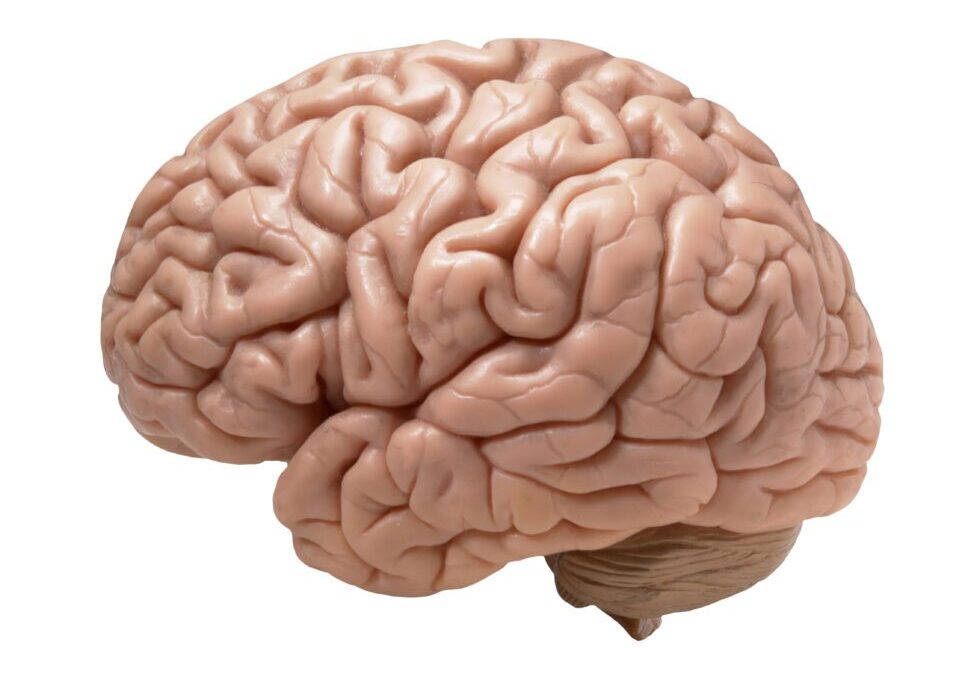In the vast and vibrant landscape of modern medicine, where technology is dazzling and breakthroughs are routine, a quieter story unfolds—one seldom covered in headlines or whispered across examination rooms. It’s the story of rare diseases, the so-called “orphans” of the medical world. These conditions, individually uncommon but collectively widespread, affect millions of people worldwide. And yet, they remain largely neglected by research, overlooked by policymakers, and misunderstood by society.
To have a rare disease is, more often than not, to live in obscurity. It is to endure a journey filled with misdiagnoses, uncertainty, and isolation. But this invisibility is not due to lack of significance. On the contrary, the patients who live with these conditions illuminate one of the deepest ethical and scientific dilemmas of our time: how do we balance the scales of medical progress when some diseases affect few, yet those few suffer immensely?
What Makes a Disease “Rare”?
Definitions vary by country, but a rare disease is typically defined as a condition that affects fewer than 200,000 people in the United States or fewer than 1 in 2,000 people in Europe. These numbers might sound tiny in a world of billions, but when you consider that there are more than 7,000 recognized rare diseases, the statistics take on a different shape. Collectively, over 300 million people around the world live with a rare disease. That’s more than the entire population of the United States. It’s not so rare, after all.
Despite the scope, these conditions remain on the periphery of healthcare systems. Most medical professionals never receive training in diagnosing or managing rare diseases. Research funding is limited. Pharmaceutical companies often see little financial incentive to develop treatments, which are costly to create and difficult to market. As a result, over 90% of rare diseases still have no approved treatment. For the people living with them, this reality can be both heartbreaking and maddening.
The Diagnostic Odyssey
Imagine experiencing unexplained pain, fatigue, or a progressive loss of function. You see doctor after doctor, specialist after specialist. Each has a theory, a test, a treatment plan that doesn’t quite work. Years pass. Your condition worsens. Family and friends grow weary. Some suggest it’s all in your head. But you know your body is trying to tell a story that no one seems able to read.
This is the diagnostic odyssey that countless rare disease patients endure. On average, it takes five to seven years to receive a correct diagnosis. In that time, many patients are misdiagnosed multiple times, sometimes receiving unnecessary surgeries or harmful treatments. Others are dismissed entirely.
The reasons for these delays are numerous. Rare diseases are not well-known, even among specialists. Their symptoms often overlap with more common conditions. Diagnostic tests might not exist or may be expensive and inaccessible. And in many cases, the rarity itself becomes a barrier: doctors simply don’t think to consider the uncommon.
The result is not just physical suffering but deep psychological trauma. To live in a body that is betraying you and to be told that your suffering is unknowable, unclassifiable, or unimportant is a kind of pain that transcends the clinical.
The Ripple Effect on Families and Communities
Rare diseases are not solitary afflictions. They ripple outward, impacting entire families and communities. Parents of children with rare diseases often become full-time caregivers, sacrificing careers, finances, and personal dreams to meet their child’s needs. Marriages are tested. Siblings grow up in homes overshadowed by medical emergencies and emotional strain.
Because many rare diseases are genetic, families must also grapple with questions of heredity and future planning. Genetic counseling becomes a central part of life. Some live with the fear of passing on the disease. Others carry survivor’s guilt, spared the condition their sibling or parent lives with daily.
Financial burdens are staggering. Even without a treatment, the cost of managing a rare disease can be astronomical. Travel for specialists, adaptive equipment, experimental therapies, and lost income accumulate over time. Many families go into debt, and in countries without universal healthcare, the challenges multiply. The cost is not merely financial—it is emotional, mental, and spiritual.
Why Research is Often Ignored
The economics of drug development is a cold and calculated science. Pharmaceutical companies are businesses, and their survival depends on profit. Developing a drug is an expensive, years-long process filled with uncertainty. For conditions that affect millions, the potential payoff is enormous. For diseases with only a few thousand patients, the equation looks very different.
This is where rare diseases suffer most. Because patient populations are small, clinical trials are harder to conduct. Outcomes are more difficult to measure. Regulatory hurdles are often more daunting. And in the end, even if a treatment is successful, the return on investment may be too small to interest large companies. This is why so many rare diseases remain without a single effective treatment.
Some efforts have been made to address this imbalance. In 1983, the United States passed the Orphan Drug Act, which provides incentives for companies to develop drugs for rare diseases. These include tax credits, grants, and market exclusivity. Europe and other regions have implemented similar policies. While these laws have led to important progress, they are not enough. Too many conditions still fall through the cracks.
Beyond funding, the very structure of scientific research often disadvantages rare disease studies. Prestigious journals prefer large trials and widely applicable results. Grant committees look for high-impact research. Universities prioritize projects that can attract media and public attention. Rare diseases, by nature, don’t check these boxes. And so, the work stalls or never begins.
Personal Narratives as Catalysts for Change
In recent years, personal stories have begun to cut through the apathy surrounding rare diseases. Patients and families are increasingly using social media, blogs, and advocacy groups to share their experiences. These stories are raw and moving. They put faces to conditions that otherwise seem abstract. And in doing so, they stir empathy, action, and change.
Some of the most powerful movements in rare disease advocacy have begun with one family, one patient, one voice refusing to be silent. These narratives humanize the statistics and remind us that behind every diagnosis is a person—a child who cannot walk, a teenager losing their sight, an adult struggling to breathe. Their stories deserve to be heard not just because they are tragic, but because they are part of our shared human experience.
Many advocacy groups have emerged from these stories. They raise funds for research, push for policy changes, and create support networks. Though often small and grassroots, their impact can be profound. They are slowly reshaping the landscape, one condition at a time.
The Scientific Frontier: Unlocking the Secrets of the Genome
Paradoxically, the very rarity of these diseases makes them uniquely valuable to science. Because many rare diseases are monogenic—caused by mutations in a single gene—they offer a relatively clean window into how genes function. By studying these conditions, researchers can uncover mechanisms that apply broadly to human biology.
For example, the study of familial hypercholesterolemia, a rare genetic condition that causes extremely high cholesterol levels, helped scientists understand the role of LDL cholesterol in heart disease. This knowledge ultimately benefited millions. Similarly, work on spinal muscular atrophy has led to breakthroughs in RNA biology, now being applied to other disorders.
With the rise of genomic technologies, the potential to understand and treat rare diseases has never been greater. Whole genome sequencing can identify mutations with unprecedented speed and accuracy. CRISPR and gene therapy offer the possibility of correcting genetic errors at their source. What was once science fiction is becoming science fact.
But harnessing this power requires investment—not just in labs, but in data sharing, patient registries, and ethical frameworks. Rare disease patients are often eager to participate in research. What they need is for the scientific community to take their conditions seriously enough to prioritize them.
Global Disparities in Rare Disease Care
The challenges of rare diseases are magnified in low- and middle-income countries. There, the infrastructure for diagnosing and managing rare diseases is often nonexistent. Basic care is difficult to access, let alone genetic testing or advanced therapies.
This creates a double burden for patients in these regions. Not only do they suffer from conditions that are poorly understood, but they also live in environments where help is even further out of reach. The global medical community must confront this inequity. Progress cannot be measured only by what is achieved in wealthy nations. A truly compassionate and forward-looking approach to rare disease care must be global.
Efforts are beginning to emerge. International collaborations, cross-border research networks, and mobile health initiatives are helping bring rare disease care to underserved regions. But these programs need scaling, support, and commitment.
Ethics, Equity, and the Moral Imperative
At the heart of this issue lies a fundamental ethical question: Do all patients deserve equal attention, regardless of how many share their condition? In an age of personalized medicine, this question is more relevant than ever. If we believe in the sanctity of life and the dignity of the individual, then the answer must be yes.
Every patient has a right to hope, to dignity, and to the best care science can provide. Ignoring rare diseases because they affect “too few” is a dangerous precedent. It reduces people to numbers and value to scale. Medicine must resist this temptation. Its noblest calling is to care not only for the many, but also for the few.
Treating rare disease patients with seriousness and compassion is not just a matter of charity—it is a matter of justice. They are not anomalies or outliers. They are part of the human mosaic, each one as deserving of medical attention as any other.
The Path Forward: Building a Future Where No Disease Is Forgotten
The road to a better future for rare disease patients requires a multi-pronged approach. It involves rethinking how research is funded, how medical education is structured, how policies are written, and how care is delivered. It demands investment, innovation, and above all, empathy.
Medical schools must integrate rare disease education into their curricula. Governments must expand support for orphan drug development. Health systems must create pathways for early diagnosis and specialist care. Researchers must be encouraged and incentivized to study rare conditions. And society as a whole must shift its perspective from marginalization to inclusion.
The good news is that change is possible. We have the tools. We have the knowledge. What we need now is the will.
Conclusion: The Measure of a Compassionate Society
The true measure of a society is not how it treats the powerful or the many, but how it treats the vulnerable and the few. Rare disease patients may be statistically uncommon, but their needs are deeply human. Their pain is real. Their dreams are valid. Their voices matter.
In shining a light on their struggles, we are not only advocating for a marginalized community—we are advancing the very soul of medicine. We are choosing to build a world in which no one is forgotten, no illness is ignored, and no life is deemed too small to matter.
It is time to bring rare diseases out of the shadows and into the center of our medical consciousness. It is time to recognize that rarity does not mean insignificance. In fact, in the quiet and often hidden stories of rare disease patients, we find some of the most profound truths about resilience, hope, and the unbreakable will to survive.






